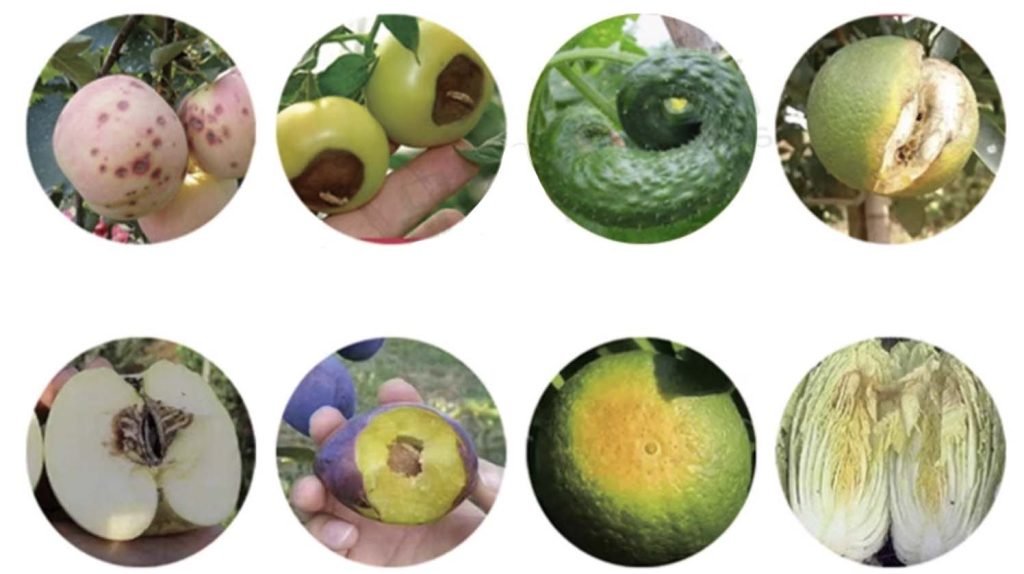Calcium is an element that is not easily mobile. It is mostly found in stems and leaves, more in old leaves than in young leaves, and less in fruits than in leaves. Calcium can only be transferred in one direction (upward).
The transportation of mineral elements in plants is generally through phloem and xylem, but calcium can almost only be transported through xylem in plants, mainly relying on transpiration, which is transported from bottom to top with the help of transpiration pull, and calcium is easily fixed in plants. Calcium easily forms insoluble calcium salts in plants and precipitates. It is an element that cannot be reused. Once calcium is fixed, it will no longer flow. This is why calcium deficiency first manifests itself in young leaves.
Symptoms of calcium deficiency in plants
Calcium nutrients are transported from the roots to all parts of the plant, primarily in the form of transpiration pull and root pressure on the xylem. Lack of calcium during cultivation can lead to problems on the fruit surface, such as soft stickiness of stem apex tissue, necrosis of apical leaf buds, curling deformity of young leaves, burnt leaf edges, and fruit cracking.
Calcium deficiency areas are the terminal leaves, lateral buds, new leaves and fruits. On the one hand, because the transpiration in these parts is weak, the transpiration of the organs is large and small. New leaves are the first to develop calcium deficiency problems due to calcium deficiency.
Calcium, on the other hand, is transferred very slowly in plants. Once calcium deficiency occurs, although a large amount of calcium is stored in the old leaves, it cannot be transferred in time. Therefore, calcium deficiency appears first in young leaves and is less pronounced in older leaves.

In order to prevent calcium deficiency in crops, we should apply calcium fertilizer to crops in time. High-quality calcium fertilizers has two characteristics.
- The concentration of calcium ions must be high, requiring more than 10%;
- Calcium activity must be strong and the absorption rate must be high, requiring more than 80%.
The main water-soluble calcium fertilizers
- Calcium nitrate,
- Calcium ammonium nitrate,
- Calcium sugar alcohol,
- Calcium chelate EDTA,
- Calcium amino acid,
- Calcium lignin
Generally speaking, calcium nitrate and calcium ammonium nitrate have high calcium content, but low absorption efficiency, and they can supplement nitrogen.
Although amino acid calcium absorption efficiency is high, the calcium ion content is low, about 5%.
EDTA chelated calcium fertilizer has the characteristics of high calcium content, high absorption rate, strong permeability, and good mixability. It has a significant calcium supplement effect and a high cost of use.
Calcium sugar alcohol is a kind of complex calcium, which can increase the stability of the product. Sugar alcohol is a substance that can carry mineral nutrients and be transported in the phloem of plants, improving the mobility of calcium. Moreover, sugar alcohol is a natural wetting agent and surfactant, which can reduce the tension of the solution on the leaf surface, extend the residence time of the solution on the leaf surface, and improve the absorption and utilization rate of calcium and product safety. Sugar alcohol is also an organic substance. , can directly supplement crops with carbohydrates. There are many varieties of sugar alcohol calcium, and the price and quality also vary, mainly depending on the sugar alcohol content in the product and the production process.

In general, calcium is an indispensable element in the growth process of crops. However, there are many types of calcium fertilizers on the market with different contents. We should choose the appropriate calcium according to the place, time and application. Fertilizer can better exert its effect.


